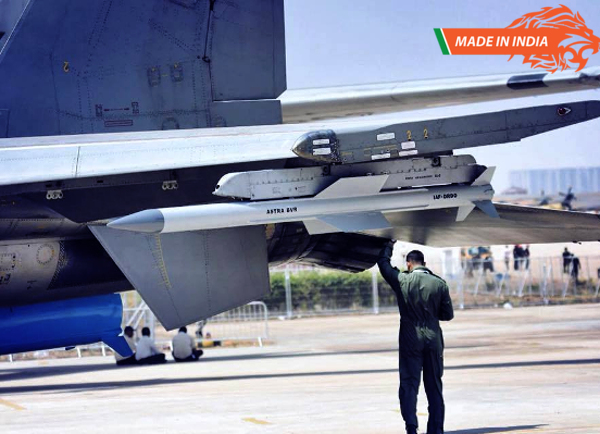NEW DELHI: India’s first indigenous beyond visual range air-to-air missile (BVRAAM) for fighters, Astra, is now finally ready for induction after 15 tortuous years of development, with the DRDO expecting the IAF to initially order at least 200 missiles for its Sukhoi-30MKI jets.
The Defence Research and Development Organisation is also already working to increase Astra’s strike range from the existing 110-km to over 160-km. “Astra is one of the best BVRAAMs in the world today. We have the capability to develop it for longer ranges,” said DRDO chief Dr G Satheesh Reddy, talking to TOI.
India has joined a handful of countries like US, Russia, France and Israel in developing such advanced air combat missiles that can destroy highly-agile enemy supersonic fighters packed with “counter-measures’’ at long ranges, say officials.
The importance of having deadly air-to-air missiles was underscored during the skirmish between Indian and Pakistani fighters along the Line of Control on February 27, a day after IAF jets bombed the JeM facility at Balakot.
The sleek 3.57-metre long Astra, with a mass weight of 154-kg, flies over four times the speed of sound at Mach 4.5. To be produced by defence PSU Bharat Dynamics for about Rs 7-8 crore per unit, Astra will be a much cheaper indigenous alternative to some of the expensive Russian, French and Israeli BVRAAMs currently imported to arm IAF fighters.
After the Russian-origin Sukhois, the indigenous Tejas light combat aircraft will also be equipped with the all-weather Astra. The missile, which is capable of handling multi-target scenarios, has “state-of-the-art ECCM (electronic counter-counter measures) to tackle jamming by hostile aircraft, active radar terminal guidance and “highly accurate complex end-game algorithms for high single-shot kill probability” in both head-on and tail-chase modes.
The DRDO is all gung-ho after it conducted five successful trials of the Astra from Sukhoi fighters against Jet Banshee target aircraft or UAVs, simulating all possible threat scenarios, off the Chandipur coast in Odisha last week.
“The targets were hit at distances of 80 to 86-km with pinpoint accuracy. The technologies developed under the programme will be the building blocks for developing future variants of air-to-air and surface-to-air missiles,” said an official.
India may have developed long-range nuclear missiles like the Agni-V, which has a strike range over 5,000-km, but had faltered in building BVRAAMs till now. Astra suffered from several technical glitches like a defective aerodynamic configuration since the missile project was first sanctioned in March 2004 at an initial cost of Rs 955 crore.
Source: ToI
Image Courtesy: Defenceupdate
You may also like
-
IAF Aircraft Set Course For Exercise Eastern Bridge VII At Oman
-
IAF Set To Host The Indian Defence Aviation Exposition-II At Jodhpur
-
Defence Secretary to co-chair 5th India-Philippines Joint Defence Cooperation Committee meeting in Manila
-
Simultaneous Launch Of ‘malpe And Mulki’, Fourth And Fifth Ships Of Asw Swc (Csl) Project
-
Aatmanirbharta in Defence: MoD signs Contract with HAL for 240 AL-31FP Aero Engines for Su-30MKI Aircraft
